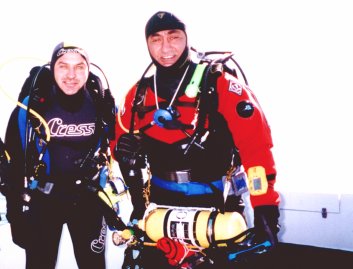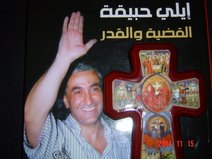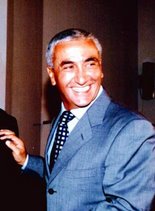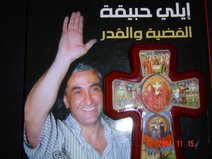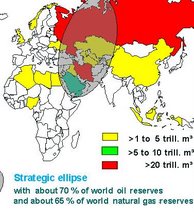
Image of the Jewish Irgun And Lehi Gangs
By Donald Neff
A photograph dated 1947 shows a poster issued by British police forces
seeking 18 wanted Jewish terrorists from the Irgun Zvai Leumi and
Stern Gang. Pictured at top left is Irgun commander and future Israeli
Prime Minister Menachem Begin (AFP Photo).
AS EASY as it is to dismiss clichés as banal and misleading, the
troubling problem is that they often cloak an essential truth. Scoffs
and derision often greet the cliché that “one man’s terrorist is
another man’s freedom fighter.” Yet freedom fighters is exactly how
Israelis view the early Zionists who fought in 1947 for the
establishment of Israel—and how Palestinians now consider their
fighters resisting Israeli occupation.
The reality is that when faced with a superior military force, such as
Britain possessed in 1947 and Israel does today against the
Palestinians, terror is the underdog’s only viable weapon. Once a
state has been established and legitimized, however, as in the cases
of Israel and South Africa, the former “terrorists” tend to gain a
veil of legitimacy as well. But legitimacy is now being denied Hamas.
Even though Palestinians elected a Hamas-led government in free and
fair elections, Israel denies it legitimacy on the grounds that Hamas
is a terrorist organization.
Sixty years ago, however, at the time of the British Mandate, it was
Jews in Palestine who mainly waged terrorism against the Palestinians.
As Jewish leader David Ben-Gurion recorded in his personal history of
Israel: “From 1946 to 1947 there were scarcely any Arab attacks on the
Yishuv [the Jewish community in Palestine].”
The same could not be said for the Zionists. Jewish terrorists waged
an intense and bloody campaign against the Palestinians, British, and
even some Jews who opposed them leading up to the establishment of
Israel.
The two major Jewish terror organizations in pre-independence
Palestine were the Irgun Zvai Leumi—National Military Organization,
NMO, also known by the Hebrew letters Etzel—founded in 1937, and the
Lohamei Herut Israel, Fighters for the Freedom of Israel, Lehi in the
Hebrew acronym, also known as the Stern Gang after its leader Avraham
Stern, known as Yair, founded in 1940.
The Irgun was led by Menachem Begin, the future Israeli prime minister
who was a leading proponent of Revisionist Zionism, the militant
branch of Zionism pioneered by Vladimir Zeev Jabotinsky, which openly
despised the Arabs and sought restoration of what it called Eretz
Yisrael, the ancient land of Israel. By this was meant “both sides of
the Jordan,” the Irgun slogan meaning all of Palestine and Jordan was
the rightful home of the Jews.
Another belief of Begin’s was that of the “fighting Jew,” a
romanticized idea expressed in Jabotinsky’s old Betar movement song of
“we shall create, with sweat and blood, a race of men, strong, brave
and cruel.” Israeli scholar Avishai Margalit translated the verse as
“proud, generous and cruel,” adding: “Many are still waiting for the
generous part to emerge.”
The Irgun was the dominant Jewish terrorist organization, both in size
and the number and frequency of its attacks. Its most spectacular feat
up to this time had been the July 22, 1946 blowing up of the King
David Hotel in Jerusalem, with the killing of 91 people—41 Arabs, 28
British and 17 Jews. Mainstream Zionists despised Begin and his
Revisionists, although there was cooperation between the two on
military matters. Ben-Gurion, the leader of mainstream Zionism, fought
throughout his premiership with Begin.
The other major Jewish terrorist group, Lehi, was more extremist than
the Irgun, claiming all the land between the Nile and the Euphrates as
belonging to the Jews. When Jabotinsky declared a cease-fire in the
fight against Britain and its mandate troops in Palestine during World
War II, Stern broke with him and founded Lehi. Stern sought alliance
with the Nazis, both because they shared an enemy in Britain and
because Lehi shared Hitler’s totalitarian ideology. During the war
Sternists openly celebrated Nazi victories on the battlefield.
An infamous document called the “Ankara Document” because it was found
in the German Embassy in Ankara after the war, detailed Avraham
Stern’s ideas “concerning the solution of the Jewish question in
Europe.” It was dated Jan. 11, 1941. At the time, Stern was still a
member of the Irgun, which he called by its initials, NMO. Wrote
Stern: “The evacuation of the Jewish masses from Europe is a
precondition for solving the Jewish question; but this can only be
made possible and complete through the settlement of these masses in
the home of the Jewish People, Palestine, and through the
establishment of a Jewish state in its historical boundaries....The
NMO...is well acquainted with the goodwill of the German Reich
government and its authorities toward Zionist activity inside Germany
and toward Zionist emigration plans....The NMO is closely related to
the totalitarian movements in Europe in its ideology and structure.”
In the Partition period, Irgun had around 2,000 men, while Lehi had
about 800. Though the memberships were comparatively small, the damage
these two groups caused in inflaming animosity between Arab and Jew
was considerable. When Stern was killed by British police in 1942,
leadership of Lehi was shared; among the leaders were Nathan Yalin-
Mor, one of the eventual killers of Count Bernadotte, and Yitzhak
Shamir, another future prime minister of Israel.
Arab terrorists carried out some major operations as well, including
the bombing of the Jewish Agency and the Palestine Post. But in
contrast to Jewish violence, it was unorganized and episodic. As
historian Michael C. Hudson noted: “Organized Jewish violence against
the British and Arabs (exemplified by the Irgun’s bombing of the King
David Hotel in 1946), however, was far more systematic and successful
than that of the Palestinians, and the latter were unable to play a
significant role in the final years of the Mandate.”
The Jewish Agency, as the official representative of the Jewish
community, repeatedly denied any responsibility for the acts of the
Irgun and Lehi, maintaining they were underground terrorist groups
operating outside the law. However, there was close cooperation among
Irgun, Lehi and the Haganah underground army under an agreement called
the Hebrew Resistance Movement and aimed specifically against the
British Mandatory government. It went into force in the fall of 1945,
when “Irgun and Lehi accepted Haganah discipline in the conduct of all
armed operations,” in the words of historian Noah Lucas.
By December 1947, British High Commissioner Alan Cunningham reported
to London: “...the Haganah and the dissident groups are now working so
closely together that the Agency’s claim that they cannot control the
dissidents is inadmissible.”
[Donald Neff is the author of the Warriors trilogy, Fallen Pillars:
U.S. Policy towards Palestine and Israel, and Fifty Years of Israel]
SIDEBAR
1947: A Year of Terror
Jan. 12—Four killed by Irgun terrorist bombing of British
headquarters.
Jan. 13—Arab kidnapped and castrated by Jewish terrorists.
March 1—Sixteen Britons killed by Jewish terrorists/Britain invokes
martial law
March 10—Jewish informer killed by Jewish terrorists.
March 11—Two British soldiers killed by Jewish terrorists.
April 8—British constable killed by Jewish terrorists.
April 8—Jewish boy killed by British troops.
April 8—Jew beaten to death by Arabs.
April 22—Eight killed in Jewish terrorist bombing of the Cairo-Haifa
train.
April 25—Five killed in Jewish terrorist bombing of British camp.
April 26—British police official killed by Jewish terrorist.
May 8—Three Jewish shops in Tel Aviv whose owners refused to
contribute to Jewish terrorist groups burned down by Jewish
terrorists.
May 8—Jew killed near Tel Aviv by Arab terrorists.
May 12—Two British policemen killed in Jewish Jerusalem.
May 15—British policeman killed in terrorist ambush.
May 15—Two British soldiers killed in terrorist Stern Gang attack.
May 16—Two British police officers killed by terrorists.
May 18—One Jew killed, one wounded by Arab terrorists.
June 5—Jewish terrorists introduce letter bombs in Middle East.
June 28—Four British soldiers killed in Jewish terrorist raids.
July 3—“Anti-terrorist” Jewish families beaten up by Irgunists.
July 18—British soldier killed by Jewish terrorists.
July 19—Another British soldier killed by Jewish terrorists.
July 20—Yet another British soldier killed by Jewish terrorists.
July 23—65 Jews killed when Haganah sinks immigration ship.
July 26—Two British soldiers killed in booby trap.
July 29—Three Jews executed by hanging. Jewish terrorists retaliate
by hanging two British soldiers.
Aug. 5—Three British police killed by bomb; plot discovered to poison
the water supply of non-Jewish parts of Jerusalem with botulism and
other bacteria.
Aug. 10—Four Jews killed in Arab terror attack on Tel Aviv café.
Aug. 12—Five Jews, four Arabs killed, others injured, in spread of
violent incidents over three days.
Aug. 15—Twelve Palestinians killed in raid by Haganah troops.
Aug. 18—Shops of five Jews in Tel Aviv destroyed by Jewish terrorists.
Aug. 23—Five Arabs of one family—two men, a woman and two children—
killed by Jewish terrorists.
Sept. 7—French foil Stern Gang plot to air bomb London.
Sept. 21—British messenger killed by Jewish terrorists.
Sept. 26—Four British policemen killed in Irgun terrorist bank
robbery.
Sept. 27—Illegal Jewish immigrant killed by British.
Sept. 29—13 killed, 53 wounded in Irgun terrorist attack on British
police station.
Oct. 4—Two Jews killed in ambush, two Arabs killed in retaliation.
Oct. 13—Two British troops killed by Jewish terrorists in Jerusalem.
Oct. 26—Jewish settlement policeman found killed near Gaza.
Nov. 3—Jewish policeman killed, reportedly by Stern Gang after
refusing to reveal secret police matters.
Nov. 12—21 killed in British-Jewish clashes.
Nov. 14—Jewish terrorists kill 4 Britons in Jerusalem and Tel Aviv
Nov. 30—Violent riots erupt throughout Arab world following adoption
of U.N. partition plan. In Palestine, seven Jews killed and eight
wounded in the first day. All told, during the first week at least
159 persons were killed in the Middle East, 66 of them in
Palestine.
Dec. 2—Palestinians begin 3-day protest strike; 20 Jews, 15 Arabs
killed. Five Arabs and seven Jews were killed the next day during a
six-hour battle on the Tel Aviv-Jaffa border.
Dec. 13—35 Palestinian civilians killed in Jewish terrorist attacks.
Dec. 14—14 Jews killed by Arab Legion in retaliation.
Dec. 18—Palmach (“assault companies”) kills 10 Arabs, including 5
children, in nighttime raid on northern Galilee village of Khissas.
The following day Haganah troops blew up the home of the village
elder of Qazaza in central Palestine, killing several inhabitants.
Wrote The Times of London: “While the Jews are suffering mainly
through sniping at their road convoys, the Arabs have lost many
lives through Jewish assaults on their villages.”
Dec. 20—Haganah raid on village of Qazaza kills one Palestinian.
Dec. 24—Stern Gang member killed for betrayal of another member.
Dec. 25—16 Arabs, Jews and British killed on Christmas.
Dec. 25—Palestinian landowner killed for selling land to Jews.
Dec. 26—Ben-Gurion proposes major offensive to reduce Arab population.
Dec. 26—Jewish terrorists get $107,000 in heists of diamond plants.
Dec. 29—14 Arabs killed by Irgun bomb in Jerusalem.
Dec. 29—Irgun flogs British major and three sergeants.
Dec. 30—41 Jews, 6 Arabs killed in riot sparked by Stern Gang.
Dec. 31—Irgun claims to have killed 374 Arabs and British during year.
http://www.wrmea.com/archives/May-June_2006/0605014.html
